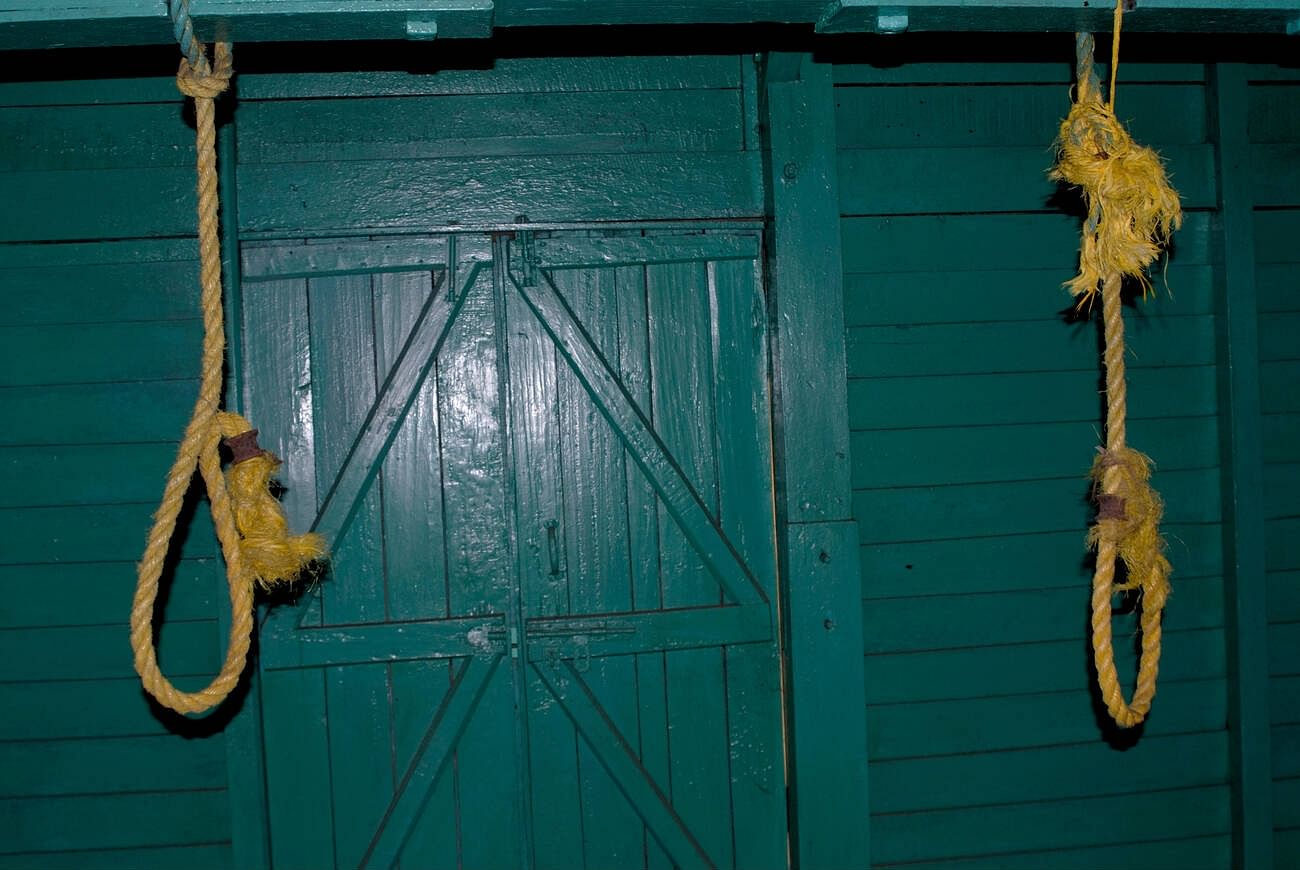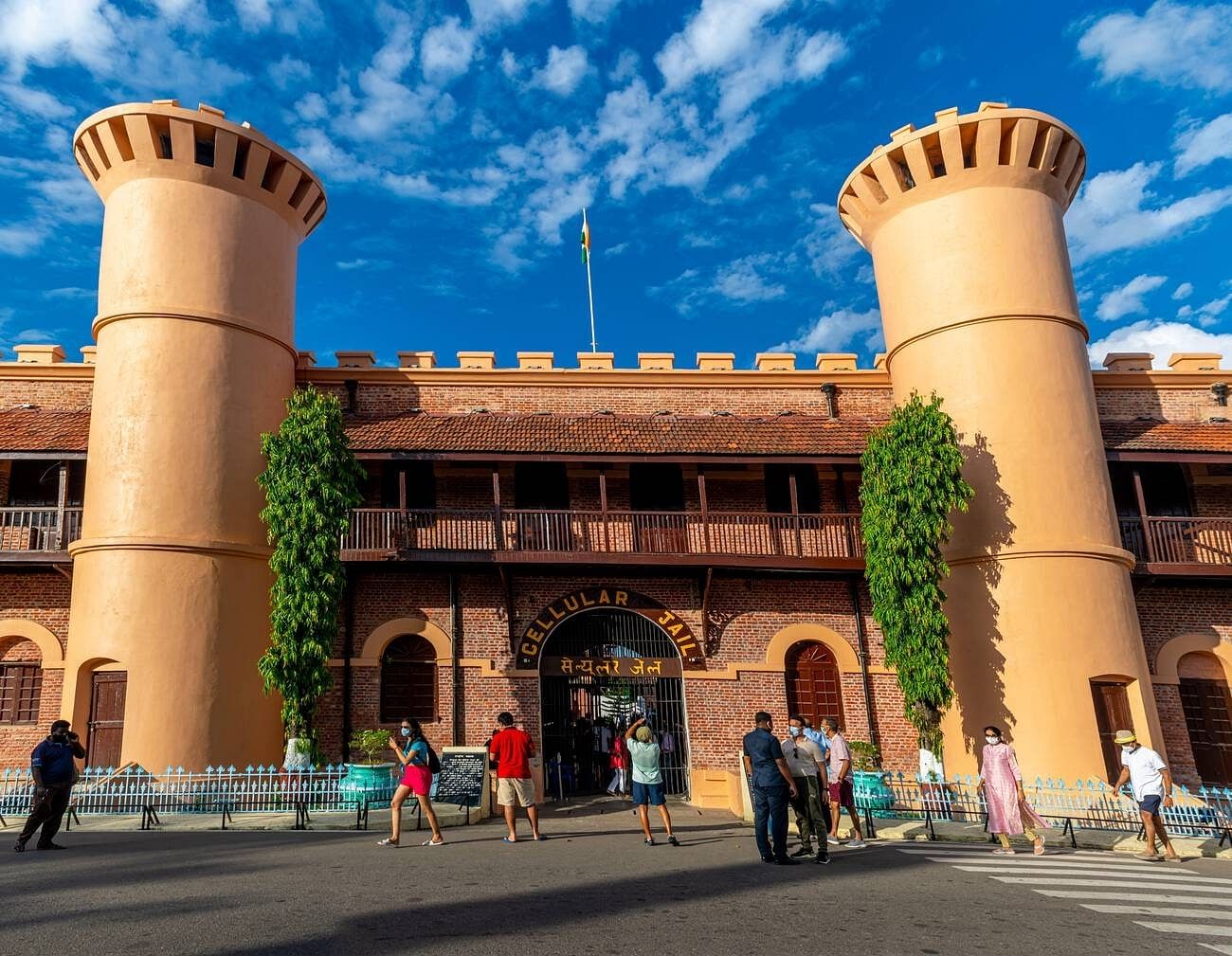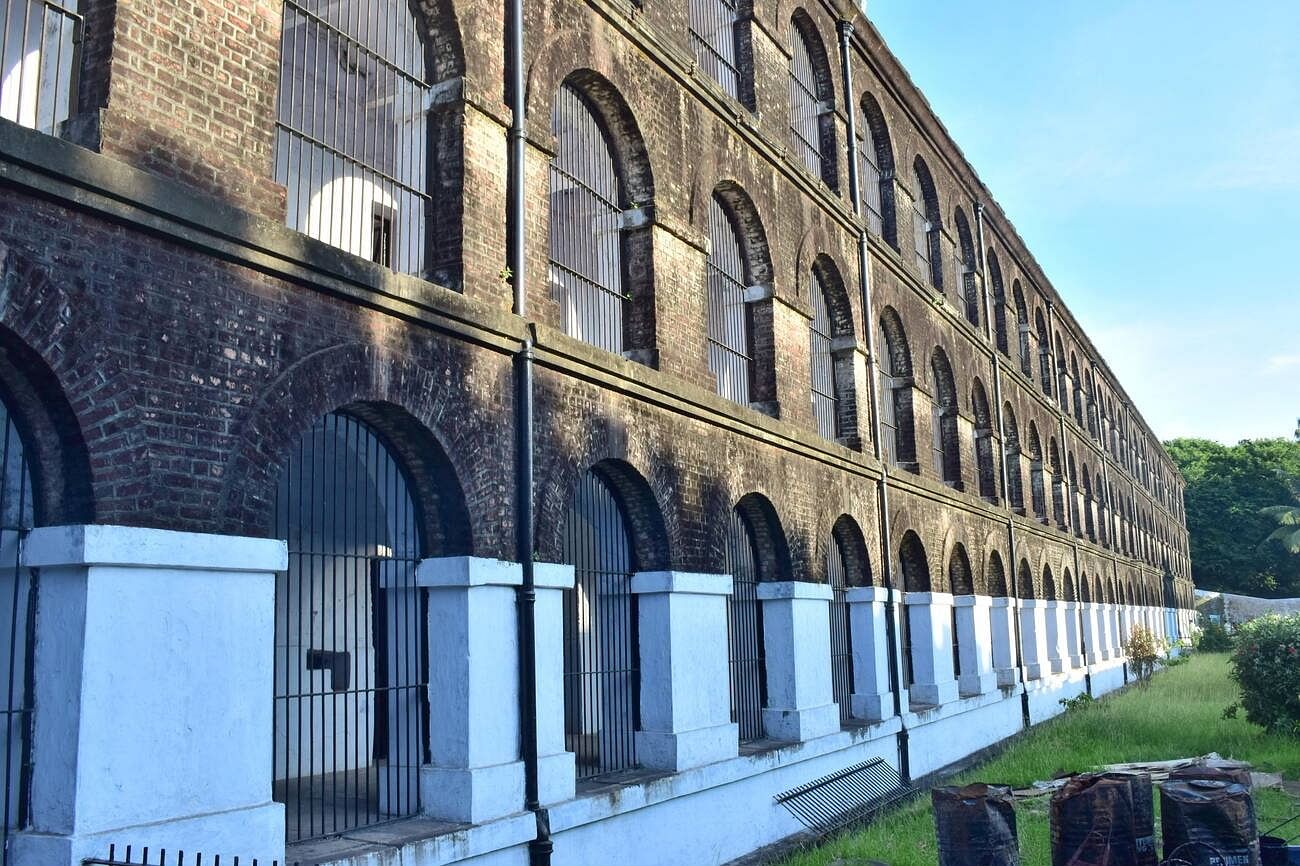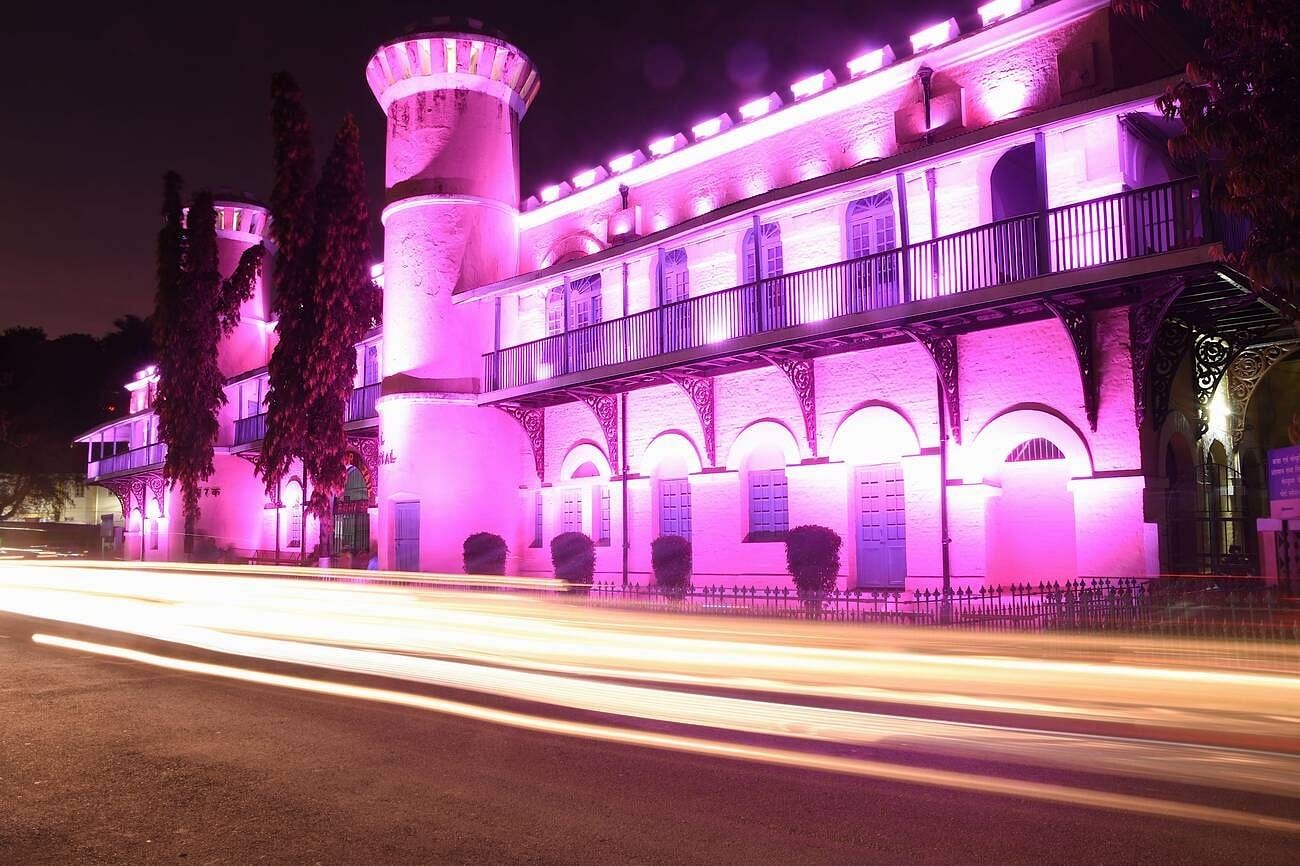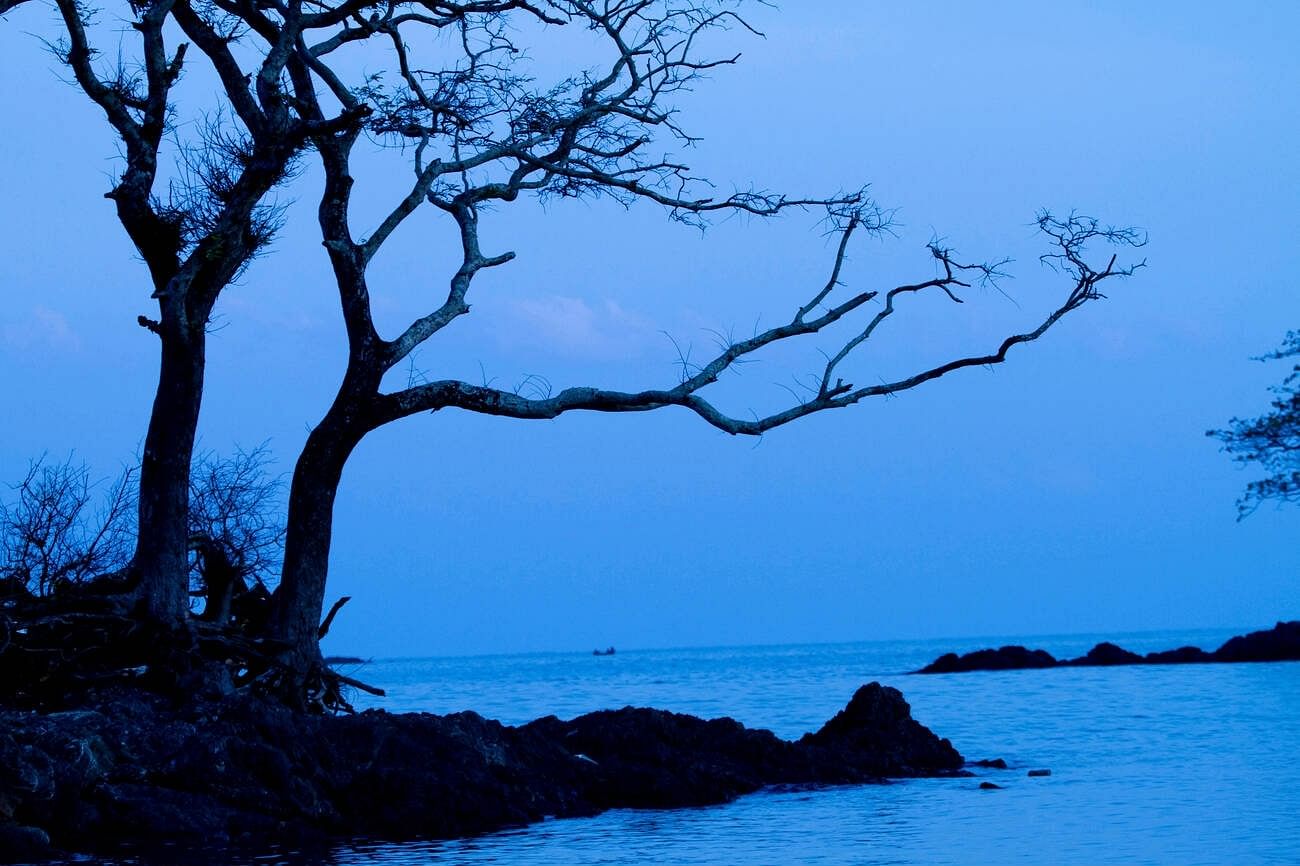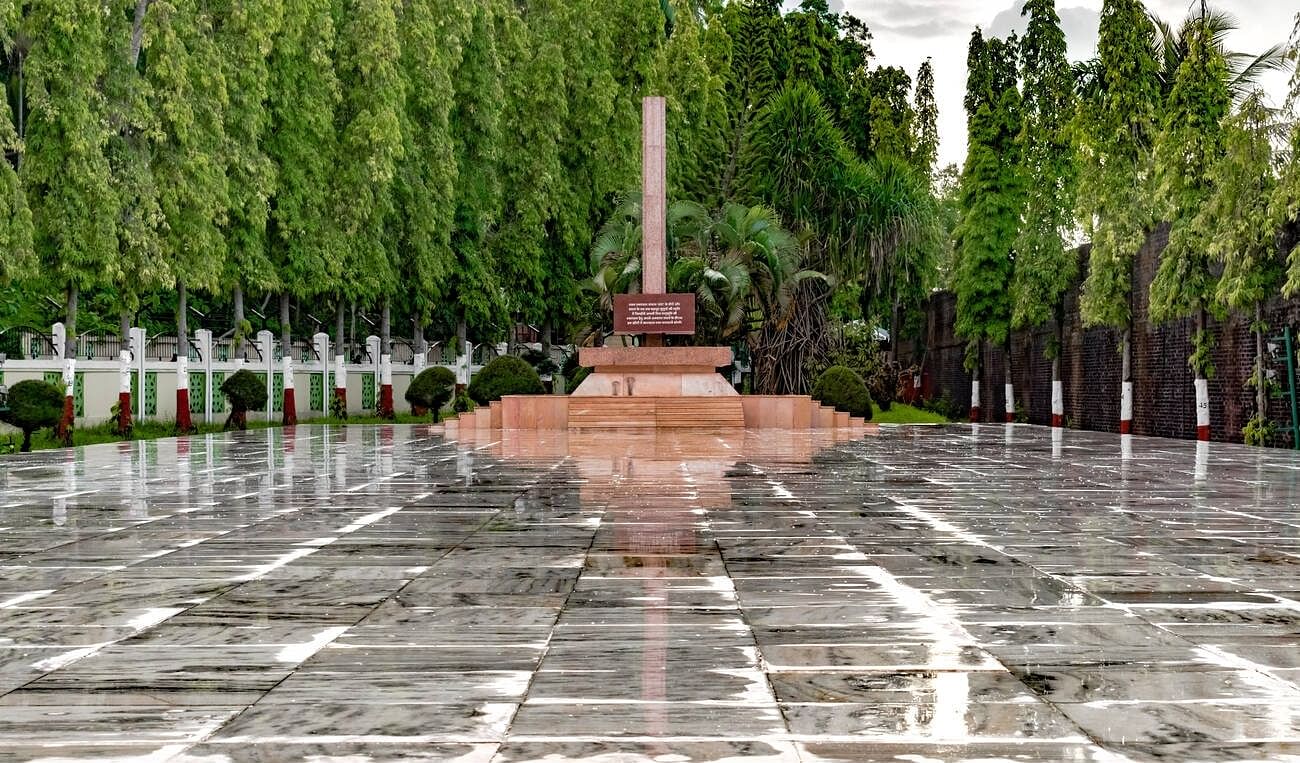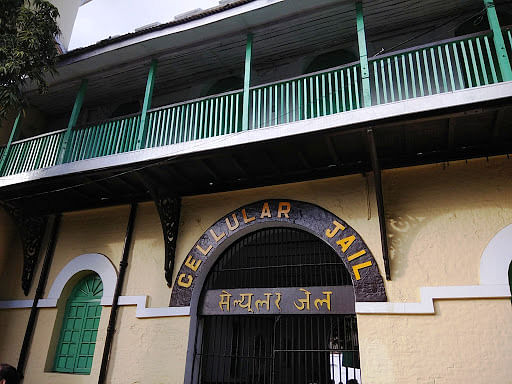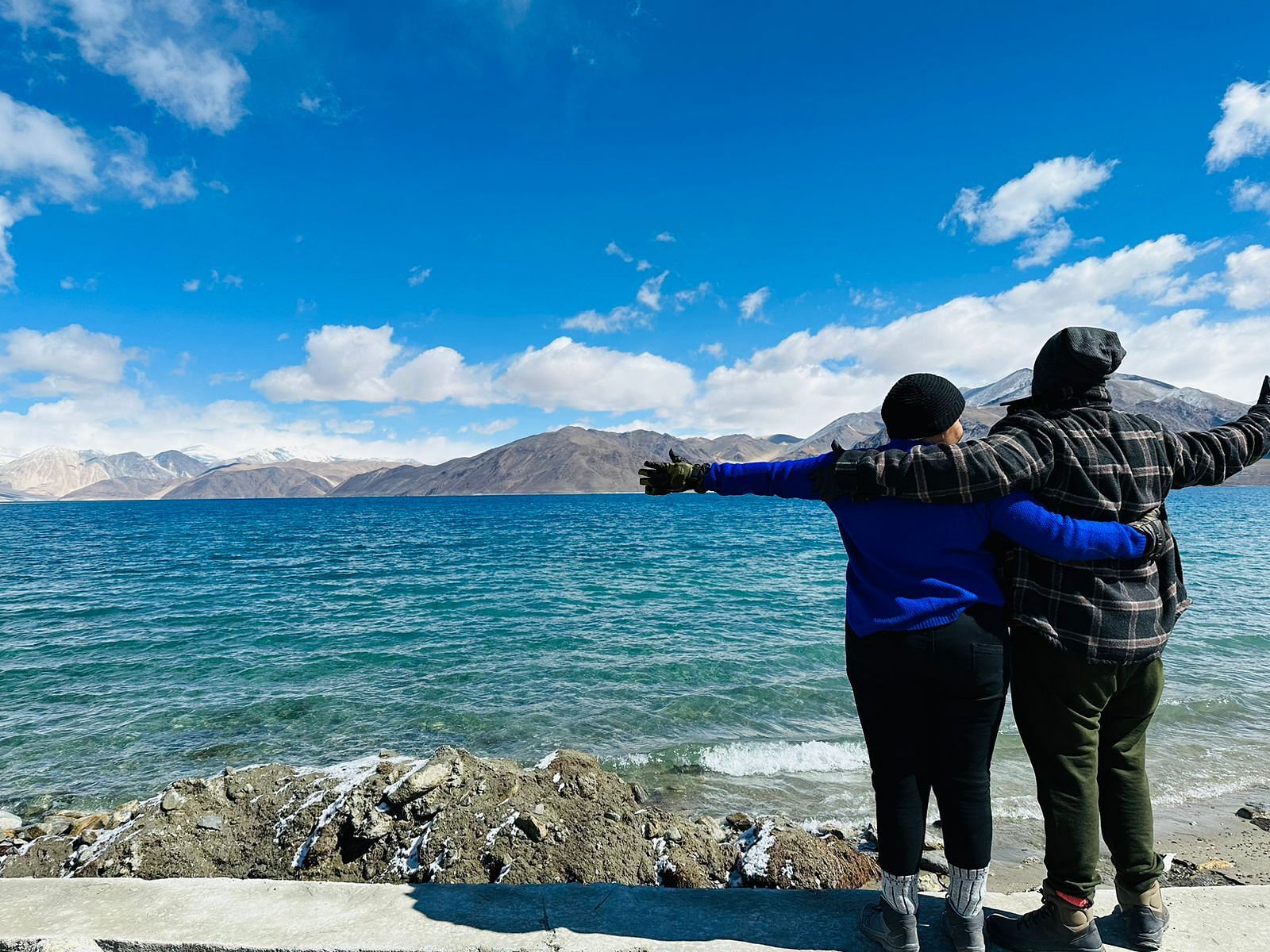Cellular Jail, standing as a haunting testament to India’s struggle for independence, was Built in 1906, this colonial prison earned the notorious name “Kala Paani” (Black Waters) for its brutal isolation and torturous conditions. The seven-wing structure, designed like a bicycle wheel’s spokes, housed Indian freedom fighters in solitary confinement, each cell deliberately positioned so prisoners couldn’t communicate. Notable revolutionaries like Veer Savarkar endured years of harsh imprisonment here, facing severe punishment and forced labor. Today, this national memorial serves as a powerful reminder of colonial oppression and the indomitable spirit of India’s independence movement, drawing visitors to its haunting corridors and freedom fighters’ stories. It is one of the best places to visit in Andaman.
The historic Cellular Jail is a must-visit stop in Andaman tour packages. One of the best places to visit in Port Blair, Andaman, and Nicobar Islands, this iconic structure stands as a reminder of the immense sacrifices made by Indian freedom fighters during British rule. It’s not just a jail; it’s a symbol of courage, resilience, and the unyielding spirit of those who fought for the country’s independence.
The History of Cellular Jail
The history of Cellular Jail dates back to the late 19th century when the British colonizers sought a remote location to exile Indian revolutionaries. The Andaman Islands, surrounded by the Andaman black water, became the perfect spot for this purpose. Construction of the jail began in 1896 and was completed in 1906. Unlike ordinary prisons, the Cellular Jail was designed to isolate prisoners. The word “cellular” refers to the unique structure of individual cells. Each prisoner was confined alone, making communication nearly impossible. This isolation was intended to break their morale and suppress any form of rebellion. However, despite the harsh conditions, the prisoners held onto their ideals and continued their fight for freedom.
Many notable freedom fighters, such as Veer Savarkar and Batukeshwar Dutt, were imprisoned here. The Andaman Jail became infamous for its inhumane treatment, with prisoners subjected to brutal punishments and forced labor. Today, this historic site has been preserved as a national memorial, honoring the sacrifices of those who endured unimaginable hardships.
Suggested Read: Budget trip to Andaman
Architecture of Cellular Jail
The Cellular Jail in Port Blair was originally constructed with seven wings radiating from a central watchtower, resembling the spokes of a wheel. This design allowed guards to keep a close eye on all the prisoners from a single vantage point. Each wing had three stories, and the total number of solitary cells was 696. The cells were small and had no windows, except for a tiny ventilator high up on the wall. Prisoners were locked up for 23 hours a day, with only an hour allotted for necessities. Most of the original structure was destroyed during World War II, but three wings and the central tower remain, offering a glimpse into its grim past.
Visiting Cellular Jail in Port Blair
For anyone visiting the Andaman Islands, the Cellular Jail in Port Blair is a must-see destination. Walking through its narrow corridors and stepping into the solitary cells is a humbling experience that takes you back to one of the darkest periods in India’s history.One of the main attractions of the Cellular Jail is the Light and Sound Show held in the evenings. This show narrates the struggles of the prisoners and the significance of the jail in India’s freedom movement. The powerful storytelling, accompanied by music and lighting effects, brings history to life emotionally and unforgettably. The museum within the jail complex showcases photographs, artifacts, and documents related to the prisoners and their lives. It provides a deeper understanding of the conditions they endured and their contributions to India’s independence struggle. Suggested Read: Travel Tips for Andaman
Tourist Places Around Cellular Jail
After visiting the Cellular Jail, there are several nearby attractions that you can explore to make your trip even more enriching. Here are some of the tourist places around Cellular Jail that are worth a visit: Located just 8 km from Port Blair, Corbyn’s Cove Beach is a beautiful spot perfect for relaxation. With its palm-lined shores and gentle waves, it’s an ideal place to unwind after the intense experience of visiting the jail.
A short ferry ride from Port Blair, Ross Island was once the administrative headquarters of the British. Today, it is known for its historical ruins, greenery, and the presence of deer roaming freely.
Known as the “Sunset Point,” Chidiya Tapu is a beautiful destination popular for birdwatching and its stunning sunset views. It’s a great spot to reflect on your visit to the Cellular Jail while enjoying nature’s beauty.
Suggested Read: Water activities in Andaman
Kala Paani: A Legacy of Suffering
The term Kala Paani, meaning “black water,” is deeply associated with the Cellular Jail and its legacy. The phrase refers to the surrounding waters of the Andaman Islands, which were believed to be cursed by the prisoners. For them, being sent to Kala Paani meant not only physical isolation but also being cut off from their families and homeland. The British strategically chose the remote Andaman Islands to ensure that prisoners couldn’t escape or communicate with the outside world. Surrounded by the vast Andaman black water, the jail became a symbol of exile and suffering. Despite the unimaginable hardships, the freedom fighters imprisoned here refused to give up, making their sacrifices even more commendable.
Best Time to Visit Cellular Jail
The best time to visit Cellular Jail is between October and March, during the winter months. The weather during this period is pleasant, making it easier to explore the site and nearby attractions. Summers can be hot and humid, while the monsoon season (June to September) brings heavy rainfall, which might disrupt travel plans. If you’re planning to attend the Light and Sound Show, evening visits are recommended as they provide a unique perspective on the jail’s history.
Visiting Hours and Entry Fee of Cellular Jail
The visiting hours and entry fee of Cellular Jail are: - Visiting Hours: 9:00 AM to 1:00 PM and 2:00 PM to 5:00 PM. The jail is closed on Mondays and national holidays.
- Entry Fee: INR 30 for adults, with additional charges for photography and the Light and Sound Show.
Suggested Read: Cruises to Andaman
Importance of Cellular Jail Today
The Cellular Jail is not just a tourist destination; it’s a place of national pride and reflection. It reminds us of the sacrifices made by countless individuals who fought for India’s freedom. Visiting this site is a humbling experience that helps us understand the value of liberty and the resilience of the human spirit.The Cellular Jail in Port Blair is a must-visit for anyone traveling to the Andaman Islands. Its rich history, haunting architecture, and emotional legacy make it one of the most important landmarks in India. Whether you’re drawn by the tales of Kala Paani, interested in the history of Cellular Jail, or simply exploring tourist places around Cellular Jail, this site offers an unforgettable experience. The Cellular Jail stands as a tribute to the unbreakable spirit of India’s freedom fighters and a reminder of the sacrifices that paved the way for the country’s independence.





